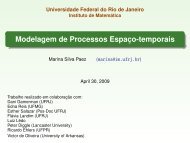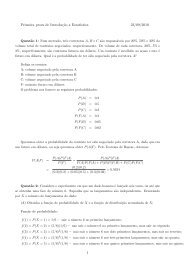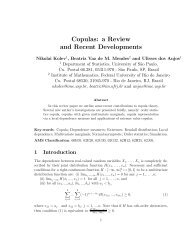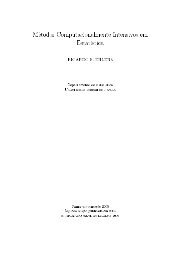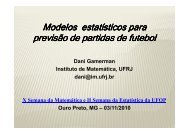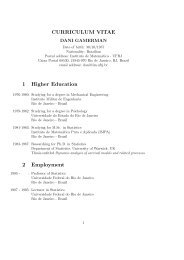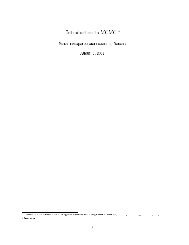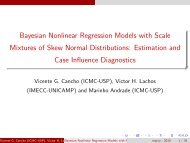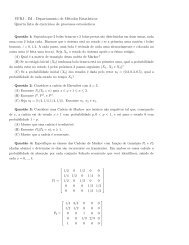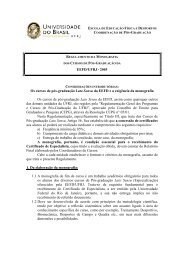Untitled - UFRJ
Untitled - UFRJ
Untitled - UFRJ
Create successful ePaper yourself
Turn your PDF publications into a flip-book with our unique Google optimized e-Paper software.
Bayesian Inference for a Skew-Normal IRT Model under theCentred ParameterizationCaio Lucidius Naberezny Azevedo ∗Department of Statistics, University of Campinas, BrazilHeleno BolfarineDepartment of Statistics, University of São Paulo, BrazilDalton Francisco de AndradeDepartment of Informatics and Statistics, Federal University of SantaCatarina, BrazilItem response theory (IRT) comprises a set of statistical models which are usefull in many fieldswhere there is an interest in studying latent variables. These latent variables (or characteristcs) aredirectly considered in the Item Response Models (IRM) and they are usually called latent traits. Anusual assumption, for parameter estimation of the IRM, considering one group of examinees, is to assumethat the latent traits are random variables that follow a standard normal distribution. However, manyworks suggest that this assumption does not apply in many cases. Furthermore, when this is the case,the parameter estimates tend to be biased and misleading inference can be obtained. Therefore, thischaracteristic must be taken into account. In this paper we present an alternative for latent traitmodelling based on the so-called skew-normal distribution. We used the centred parameterization. Thisapproach ensures the model identifiability. Also, a Metropolis-Hastings within Gibbs sampling basedalgorithm was built for parameter estimation through an augmented data approach. A simulation studywas performed in order to assess the recovering of all parameters of the proposed estimation algorithmsand the effects of asymmetry of the latent traits distribution in such estimation. Also, a comparisonof our approach with other widely used estimation methods was considered. The results indicated thatour proposed algorithm recovers properly all parameters. Stronger the asymmetry level, better is theperformance of our approach compared to the others, specially for small sample sizes. Furthermore, weanalyzed a real data set which presents traits of asymmetry. The results obtained using our approachconfirmed the presence of strong negative asymmetry.∗ Apresentador/Speaker26



